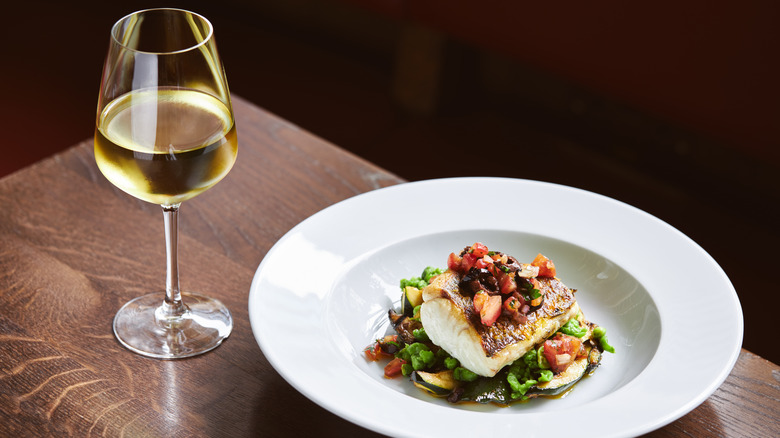The Difference Between Complementary And Congruent Wine Pairings
When it comes to the world of wine and gastronomy, the art of pairing wine with food is a captivating adventure. Two terms that often surface in the realm of wine pairing are "complementary" and "congruent." While both approaches aim to enhance the dining experience, they do so in distinct ways, adding layers of complexity and delight to your meal.
Complementary wine pairings are like a beautifully choreographed dance of flavors, where contrasting elements come together to create harmony. In this pairing, the wine and food components complement each other by providing a striking contrast. Think of pairing a rich, buttery Chardonnay with a zesty lemon-infused seafood dish. The creamy texture of the wine offsets the acidity of the dish, resulting in a delightful balance of flavors.
On the other hand, congruent wine pairings are akin to a duet, where the wine and food harmoniously sing the same notes. In this case, the wine and the dish share similar flavor profiles, intensifying the overall experience. For example, a spicy Zinfandel paired with a smoky barbecue brisket enhances the smokiness in both the wine and the food, creating a symphony of flavors that resonate on your palate.
What really separates these pairings?
So, what sets these two approaches apart? Apart from using pairings to seek balance through contrast and similarity, there are other components of the wine and food profiles that can be accented. When choosing which type of wine pairing to use, a few factors to consider include acidity, fat, sweetness, salt, and spice.
Use complementary pairings when you want to highlight specific elements in the food or wine. You can try experimenting with contrasts in flavor, texture, and acidity. By playing on different elements within the wine and the food, this type of wine pairing is perfect for those looking to experience a unique perspective on the palate. For example, spicy Thai curry with a sweet Riesling or a fatty steak with a robust Cabernet Sauvignon are both adept complementary pairings.
Instead of highlighting the differences, congruent wine pairings enhance the similarities of the flavor profiles. This makes for a seamless, comforting overall dining experience that is more homogenous and blended. Not all of these characteristics of food and wine work well for congruent pairings. Sweetness and even spice, however, can provide uniform harmony with the right dishes when paired well. A couple of examples include Champagne with oysters or Pinot Noir with mushroom risotto. Each matches very similar notes within the wine and the dish served.
Tips for utilizing these wine pairings
The magic of wine pairing lies not just in following rules, but also in exploring and discovering your own palate. Don't be afraid to experiment and find your personal preferences. A few additional tips include finding the right balance and harmony. The wine should neither overpower the dish nor be overshadowed by it. That's why balance is key for both complementary or congruent wine pairings. To create harmony, consider pairing wines with dishes from the same region, as they often have a natural affinity for each other.
Finally, consider the context of the occasion. A romantic dinner might call for a more congruent pairing, while a lively gathering may benefit from complementary pairings that spark conversation. Think through the atmosphere of the meal and choose the type of wine pairing that will best serve the diners' experience.
In the end, the world of wine pairings is a delightful journey of discovery, where both complementary and congruent approaches offer a chance to elevate your dining experience. So, raise your glass and savor the symphony of flavors that await as you explore the world of wine and food pairing.


